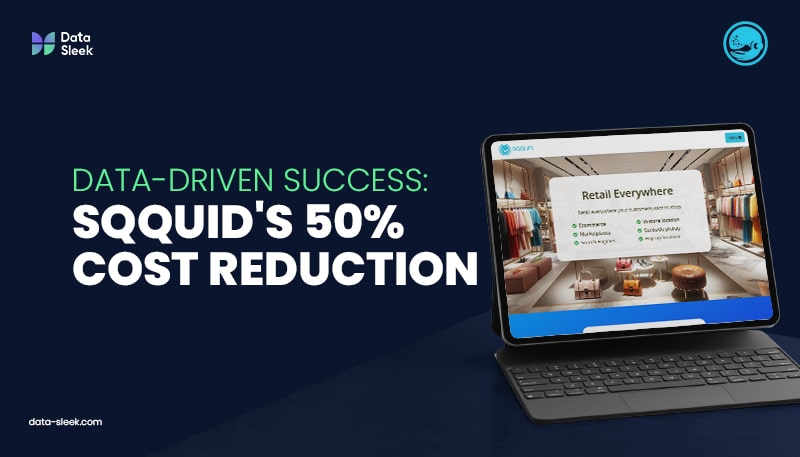If you’re in an industry that relies on acute inventory management, you understand the high risks associated with inaccurate data. Stockouts, overselling, and supply chain disruptions are just a few of the challenges that make building a scalable inventory management database essential to your organization. A robust inventory system serves as the overall framework for managing stock, integrating database design, staff training, and advanced management features to ensure efficient and reliable operations.
Managing inventory can be a daunting task, especially as businesses grow. Did you know that 41% of businesses rely on manual processes in logging inventory? This can lead to inefficiencies and lost revenue.
A scalable inventory management database architecture streamlines inventory tracking and ensures efficiency as your business grows. Centralizing inventory data enhances order management, streamlines purchase orders and provides real-time information. The system also enables the generation of reports on sales trends, item performance, and inventory valuation, aiding in forecasting and informed decision-making. A well-structured database is crucial for maintaining data integrity, supporting efficient operations, and ensuring the reliability of your inventory system.
This approach swiftly meets customer demand and minimizes stockouts or overstocking, so let’s explore the key principles for building and choosing the right database to support these critical functions.

Key Highlights
- A scalable inventory management database is essential for businesses, enabling growth and handling large data volumes.
- Key principles include scalability, performance, reliability, and flexibility to adapt to changing needs.
- Key features include real-time tracking, user-friendliness, and integration with other business systems, making the database effective and suitable for various business requirements.
- Choosing the right technology, such as RDMS, NoSQL, or Cloud Databases.
- Effective design involves normalization, data partitioning, and indexing strategies.
- Implementing features like load balancing, caching, and data replication enhances performance.
What Is Inventory Management?
Inventory management handles sourcing, storing, and selling raw materials and finished goods. It spans the supply chain from purchasing to sales. Efficient inventory management ensures the right products are available in the right quantities at the right time, minimizing costs and maximizing efficiency.

At its core, inventory management processes involve tracking inventory levels, orders, sales, shipping, and deliveries. This can be done through manual methods, such as spreadsheets, or advanced inventory management software that automates and optimizes the process. A user-friendly interface is essential in such software, as it makes the system easier to navigate and operate, helping users manage inventory more efficiently.
Key Components of Inventory Management Database
A good inventory management system is essential for an effective system, serving as a central repository for all inventory-related information. Key components include:
- Product Details: Name, SKU, description, supplier information, and product prices.
- Inventory Levels: Real-time stock updates at various locations.
- Stock Levels: Minimum and maximum thresholds to prevent stockouts or overstocking.
- Transaction History: Records of purchase orders, sales orders, returns, and transfers.
A well-designed database schema serves as the blueprint for organizing inventory data and relationships, facilitating data management, report generation, and system scalability.
These elements enable efficient tracking, forecasting, ordering, and storing inventory, helping businesses manage their inventory effectively.
Depending on your industry, key fields might also include:
- Sales Orders: Product ID or SKU, Quantity Sold, and Customer Information.
- Suppliers and Vendors: Supplier ID, SKU, payment terms, and even a timetable for reordering if you’re using a JIT system.
- Warehouse Location: Location IDs and units in stock.
- Returns: Records, customer details, return details, and action taken.
- Locations Table: Manages inventory across different physical places, including fields for Location ID, warehouse name, and address.
When designing relationships between tables, use primary key constraints to identify records in each table uniquely, and foreign key constraints to link related tables such as Products and Suppliers, or Inventory and Transactions, enforcing referential integrity. One to many relationships are established between entities like Products and Transactions using foreign keys, allowing a single product to be associated with multiple transactions. Consistent naming conventions improve readability and maintenance of tables and columns in the database.
Maintaining accurate records is difficult even in smaller-scale operations. If a product goes viral, a supplier issues a recall, or other unexpected events arise, having a scalable database can throw a wrench in a self-managed database.
Inventory Items and Inventory Database
Inventory items are the backbone of any inventory management system, representing the products, materials, or goods a business needs to track and manage. An effective inventory database is designed to store all the details related to these inventory items, ensuring that every product is accounted for and easily accessible. The key components of an inventory database typically include a products table, which holds essential information such as product ID, name, description, and price, and a suppliers table, which contains supplier ID, contact details, and other relevant data. The Purchase Orders table records incoming stock, with fields for PO ID, supplier ID, date ordered, products, and quantities received.
A well-structured inventory database establishes clear relationships between these tables, allowing for seamless integration of inventory levels, supplier information, and transaction history. For example, the products table can be linked to the suppliers table through a unique identifier, making it easy to track which supplier provides each inventory item. Additional tables for inventory levels and transactions help businesses monitor stock on hand, manage reordering, and analyze sales trends. By organizing data in this manner, businesses can achieve more effective inventory control, minimize errors, and ensure that inventory items are always accurately tracked. Whether you’re managing a small business or a large enterprise, a robust inventory management system with a comprehensive inventory database is essential for maintaining efficiency and supporting growth.
Inventory Control and Tracking
Effective inventory control and tracking are at the heart of successful inventory management. A good inventory management system provides real-time visibility into inventory levels, enabling businesses to monitor stock levels, track inventory movements, and respond quickly to shifts in customer demand. With the help of inventory management software, companies can automate the tracking of inventory items as they move through the supply chain—from receiving and storage to picking, packing, and shipping.

Inventory tracking involves maintaining detailed records of the quantity, location, and status of each inventory item. By leveraging technologies such as barcode scanning and automated data entry, businesses can significantly improve data accuracy and reduce the risk of human error. This not only streamlines inventory management processes but also ensures that stock levels are always up-to-date, enabling businesses to make informed decisions about reordering and optimizing their inventory. Ultimately, robust inventory control and tracking empower enterprises to meet customer demand efficiently, minimize stockouts or overstocking, and maintain a competitive edge.
Why Scalability Is Important
Scalability in an inventory management database ensures it can handle increasing data and complex tasks as your business grows. It allows for the seamless addition of new products, data integration with more sales channels, and entry into new markets, helping companies to respond to changing demands and preventing performance issues.
What Are the Key Principles of Scalable Database Architecture?
The main ideas for a scalable database design include data partitioning, replication for high availability, efficient indexing, and load balancing. Choosing the right database model—such as relational, NoSQL, hierarchical, or object-oriented—is essential for structuring and managing inventory data effectively, as it impacts data organization, relationships, and system flexibility. These approaches ensure the database runs smoothly and adjusts as it expands.
Scalability
Scalability ensures a system can handle growth in data size, transaction volume, and user traffic, maintaining smooth operations as the business expands. A distributed database facilitates horizontal scaling by adding more servers, while effective indexing strategies improve query performance. By 2025, Gartner estimates that over 95% of new digital workloads will be deployed on cloud-native platforms, up from 30% in 2021, significantly enhancing scalability.

Performance
High performance is crucial for effective management, ensuring minimal delays in accessing data, generating reports, or processing transactions. The ability to efficiently create reports, such as monthly sales summaries or inventory analyses, is essential for timely business insights. Optimizing queries and implementing caching can significantly boost performance. Regular monitoring and adjustments are crucial. According to Grandview Research, the global database management system market is expected to grow at a CAGR of 13.1% from 2024 to 2030, highlighting the need for performance optimization.
Reliability
Reliability is essential for maintaining data accuracy and availability, necessitating backup plans like data replication and regular backups for disaster recovery. Robust database technology with transaction logging and point-in-time recovery further enhances reliability. By 2026, 75% of organizations will adopt a cloud-based model, underscoring the critical need for reliable protection strategies.
Flexibility
A flexible inventory management database allows businesses to adapt processes as inventory needs evolve, integrating seamlessly with CRM, ERP, and ecommerce platforms. Utilizing APIs and web services facilitates connectivity and automation. According to MarketsandMarkets, the global cloud-based database market is projected to reach $57.5 billion by 2028, growing at a CAGR of 22% during the forecast period.
Choosing the Right Inventory Management Database Technology
Selecting the best inventory management software will help you optimize your system. Some of these include:
- Relational databases, such as MySQL, PostgreSQL, and Oracle, organize data into tables for easy storage and retrieval, utilizing SQL queries to manage inventory levels and purchase orders, while offering scalability and customization for small businesses.
- NoSQL databases, such as MongoDB, Cassandra, and Redis, handle large volumes of unstructured data with flexible structures, allowing for dynamic storage and retrieval. This is ideal for rapidly growing businesses with no fixed schema.
- Cloud databases, such as Amazon RDS, Google Cloud SQL, and Azure SQL Database, offer scalability, flexibility, and cost-effectiveness, eliminating the need for server maintenance and ensuring high availability through seamless integration for real-time updates.
A well-chosen solution will streamline operations, support data-driven decisions, and help your business grow. If you’re unsure where to begin, consulting an expert can help you find the best fit for your specific needs. Contact us today to schedule a free, no risk consultation!
Common Mistakes to Avoid When Choosing the Right Databases
Selecting the right database technology is critical, but it’s equally important to avoid common pitfalls. Here are the common mistakes you should avoid when choosing the right inventory management database structure:

Not Comparing Vendors
In the excitement of adopting a new database solution, businesses often overlook the importance of comparing vendors. Opting for a well-known or cheapest option without proper comparison can lead to issues. Consider the vendor’s reputation, experience, customer service, and custom database features. Evaluating support services, including response times and technical help, ensures reliable assistance.
Unrealistic Expectations
A new inventory database management system can greatly benefit businesses, but setting realistic expectations is crucial. Many expect quick results, but setup involves data migration, system setup, staff training, and process changes. Unrealistic expectations can lead to disappointment. Involve key personnel in planning, set achievable goals, and focus on long-term benefits.
Ignoring Long-Term Compatibility
Focusing solely on current needs when selecting a database can be a mistake, leading to costly migrations later. Select a database that can scale with your business and integrate seamlessly with new technologies. Opt for one that handles various data types, supports modern APIs, and adapts to tech trends like cloud computing and AI.
Overlooking Scalability
Failing to consider scalability is a significant mistake. As your business grows, so will your inventory database. A database that can’t scale can lead to performance issues and stunted growth. Ensure the database can handle increased transaction volumes, support distributed inventory systems, and manage large data sets, supporting both vertical and horizontal scaling.
Not Understanding Data Security Needs
Inventory information must be protected from unauthorized access, data breaches, and cyber threats. Ignoring data security can lead to financial losses and legal issues. Select a database that offers robust encryption, effective access controls, and regular security audits. Implement additional measures like firewalls and multi-factor authentication, and regularly update security plans.
Failing to Involve Stakeholders
Effective project management requires input from various departments like inventory management, IT, finance, and operations. Limiting the decision to the IT department or rushing the choice without enough input misses valuable perspectives. Involve different groups to ensure the database meets various business needs and reduces potential issues.
Rushing the Decision
Choosing the right database is crucial for long-term impact. Rushing the decision can lead to compatibility issues and slow performance. Assess business needs, compare options, and look beyond initial costs. Utilize demos, case studies, and free trials to understand performance. Thorough evaluation helps make a better-informed choice, saving time and money.
Database Design for Scalability
To effectively achieve scalability, the design of the database must incorporate several strategic elements. One crucial component is the inclusion of a dedicated transactions table, which records all inventory interactions such as sales, purchases, and stock movements.
Normalization and Denormalization
Normalization reduces data redundancy by organizing data into related tables, ensuring consistency and saving storage space. For example, creating a dedicated transaction table to record all sales, returns, and transfers helps efficiently organize inventory interactions and provides a comprehensive view of inventory activity. Denormalization adds redundant data to improve query performance, sacrificing some integrity for speed. Use denormalization for frequent transactions and updates and normalization for maintaining data integrity, especially in financial system reporting.
Data Partitioning
Data partitioning enhances performance by breaking large tables into smaller parts based on criteria like category, date, or location. Horizontal partitioning divides rows, while vertical partitioning splits columns, speeding up queries and simplifying maintenance. This approach ensures reliability and efficiency in management systems.
Indexing Strategies
Proper indexing significantly improves query performance by allowing quick data retrieval without scanning entire tables. Focus on indexing frequently used columns like product IDs and SKUs. However, balance is key, as too many indexes can slow down write operations. Develop strategies based on user access and query patterns.
Use of Views and Materialized Views
Views and materialized views simplify complex queries and improve performance. Views act as virtual tables, enhancing data security and consistency without storing data. Materialized views store query results, offering faster access to reports and dashboards. Strategic use of both can greatly enhance data retrieval and user experience.
How to Implement Scalability Features
Implementing these scalability features demands a thoughtful approach and a keen understanding of your system’s dynamics. Here are the practical steps to incorporate these features effectively:
- Load Balancing: Distributes incoming requests across multiple servers to prevent slowdowns and downtime, using methods like round-robin or least connections, with failover support for reliability.
- Caching Mechanisms: Enhances performance by storing frequently accessed data in a fast-access location, reducing database load and speeding up queries while requiring strategies to keep data fresh and accurate.
- Data Replication: Boosts reliability and availability by copying data across multiple servers, ensuring functionality during failures, with methods like synchronous and asynchronous replication for varying consistency and performance needs.
- Sharding: Distributes inventory data across multiple database servers for horizontal scaling, supporting high write speeds and large datasets. It requires careful query routing and data consistency planning, with a well-chosen sharding key tailored to business requirements.
Performance Monitoring and Optimization
Continuous monitoring and optimization are crucial for ensuring your management database remains efficient and responsive for long-term success. Here are the key aspects of performance monitoring and optimization for sustained excellence. Tracking sales performance is also a critical metric, as it allows you to evaluate how effectively your inventory management supports product sales and helps identify areas for improvement.
Monitoring Tools
Monitoring tools provide critical insights into system performance, resource use, and user behavior, helping administrators identify issues before they impact the management system. Real-time dashboards and customizable reports track key metrics like query times and disk usage, especially during peak periods. Alerts for critical thresholds enable quick responses to minimize downtime and ensure a smooth user experience.
Regular Maintenance
Regular maintenance is essential for optimal system performance, data accuracy, and overall health. Best practices include frequent backups, data integrity checks, inventory software updates, and index optimization. These activities reduce the risk of unexpected downtime, maintain data accuracy, and enhance system performance, leading to better inventory control and efficient operations.
Query Optimization
Optimizing queries is vital for efficient database performance in management systems. Tools like SQL Server’s query execution plans help identify areas for improvement. Techniques such as proper indexing, query simplification, and optimized join operations lead to faster response times, reduced database load, and a more responsive user experience.
Automated Maintenance Scripts
Automating maintenance tasks like backups, index rebuilding, and data consistency checks ensures consistency and reduces human error. Scheduled scripts save time and resources, allowing administrators to focus on performance improvements and security enhancements. Version control of scripts adds accountability and stability to the management system.
Database Security and Backup
Database security and backup are fundamental to the reliability and integrity of any inventory management system. Protecting inventory data from unauthorized access, cyber threats, and accidental loss is essential for maintaining trust and ensuring business continuity. Implementing strong access controls, encrypting sensitive inventory information, and keeping software up to date are key practices for safeguarding your inventory database. Security features such as role-based access control and audit logs are essential for database integrity.
Regular backups are equally important, as they provide a safety net in case of system failures, data corruption, or disasters. Automated backup schedules, secure offsite storage, and routine testing of backup restores help ensure that critical inventory data can be quickly recovered when needed. By prioritizing database security and backup, businesses can maintain data integrity, minimize downtime, and guarantee continuous access to vital inventory information—ensuring that inventory management remains uninterrupted and reliable.
Benefits and Challenges
Adopting an inventory management system brings a host of benefits, including improved inventory control, greater operational efficiency, and enhanced decision-making through accurate inventory data. With the right inventory management software, businesses can automate routine tasks, reduce manual errors, and gain real-time insights into inventory management processes. This leads to better forecasting, optimized stock levels, and more responsive customer service.

However, implementing inventory management systems also presents challenges. Initial investments in software and employee training can be significant, and ongoing maintenance is required to keep the system running smoothly. There is also the risk of data errors or inconsistencies if processes are not carefully managed. To overcome these challenges, businesses should thoroughly assess their inventory management needs, choose inventory management software that aligns with their goals, and invest in comprehensive training. Regular analysis of inventory data and continuous process improvement are essential for maximizing the benefits of management systems and achieving better inventory control.
Support and Maintenance
Long-term success with an inventory management system depends on consistent support and proactive maintenance. Regular software updates, access to technical support, and ongoing employee training ensure that the system remains effective and user-friendly. Establishing clear procedures for monitoring system performance, troubleshooting issues, and refining inventory management processes is vital for maintaining optimal inventory control.
Staying informed about emerging trends—such as cloud-based inventory management solutions and artificial intelligence—can help businesses adapt to changing market demands and leverage new technologies for better inventory control. By prioritizing support and maintenance, companies can maximize the value of their inventory management system, reduce operational costs, and enhance customer satisfaction, positioning themselves for sustained growth and success.
Case Studies and Real-World Examples
Some case studies and real-world examples epitomize the potent impact of a well-designed, scalable management database architecture.
Ecommerce Platforms – Sqquid
Sqquid struggled with high transaction volumes and inventory data, which caused slow website speeds and order delays. Switching to a cloud-based NoSQL database improved scalability and flexibility, allowing seamless management of high traffic during sales. This resulted in enhanced customer satisfaction and increased revenue.

Retail Chains – Hyperwolf
Hyperwolf faced challenges managing inventory across multiple locations due to manual data entry and a lack of real-time updates. Implementing a cloud-based inventory solution provided real-time visibility, reduced discrepancies, and improved order fulfillment rates, enhancing planning and significantly boosting customer satisfaction.
Manufacturing Industry – Field Control Analytics
Due to manual checks, Field Control Analytics struggled with tracking raw materials and finished products. An advanced inventory management database system provided real-time visibility, optimized procurement, and streamlined production planning, resulting in significant cost savings, reduced lead times, and improved production efficiency.
What Are the Future Trends in Inventory Management Databases?
As we look toward the future, the evolution of the inventory management database promises to bring even more innovative strategies and technologies to the forefront. Some of the emerging trends include:
- Big Data Integration: By leveraging big data for better inventory insights, businesses can analyze sales trends and customer behavior to optimize inventory levels and predict demand, leading to accurate forecasting and improved supply chain management efficiency.
- Machine Learning and AI: Using AI for inventory forecasting and optimization, these technologies automate tasks and provide insights by identifying patterns in data and automating purchase orders. Investing in AI/ML is optional unless your business is committed to the costs and investment.
- Cloud-Based Solutions: The growing trend towards cloud databases offers flexibility and scalability, allowing businesses to manage without expensive hardware, adapt to market changes, and benefit from automatic updates.
Transform Your Inventory Management With Data-Sleek!
Building a scalable database is the key to sustainable growth. Take a moment to evaluate your current management systems and identify areas for improvement. If you’re like the hundreds of organizations we have had the pleasure of working with, you’re likely to find at least a few critical areas that are causing growth roadblocks.
With our experts’ guidance, you can build a scalable and robust database architecture that meets the unique demands of your business. There’s no need for your organization to waste resources trying to “figure it out” or slapping a band-aid on it and hoping the challenges will solve themselves. Our data experts have guided organizations like yours through even the toughest database challenges–quickly and efficiency.
Don’t settle for inefficiencies! Contact us today to unlock the full potential of your inventory management and drive your business toward greater success!
Inventory Management Database FAQs
Here are some frequently asked questions about creating a scalable and efficient inventory management database architecture to help your business thrive.
What types of databases are best for inventory management?
Relational databases (RDMS), NoSQL databases, and cloud databases each offer unique benefits for inventory management, such as flexibility, scalability, and performance. Choosing the right type depends on your specific business needs and data complexity.
How do you ensure high performance in an inventory management database?
Optimizing queries, implementing caching, and conducting regular performance monitoring help maintain high performance in an inventory management database. Additionally, using indexing and partitioning can significantly enhance query speed.
What is data replication?
Data replication involves copying data across multiple servers to boost reliability and availability. It also provides a failover mechanism in case of server failures, ensuring data integrity.
How can load balancing improve database performance?
Load balancing distributes incoming requests across multiple servers to prevent slowdowns and downtime. This ensures a seamless user experience even during peak traffic times.



